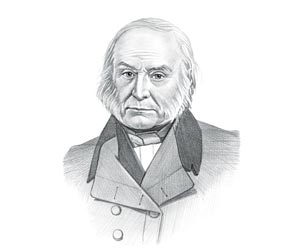|
Other forms of Public
Transport
What was an omnibus? An omnibus was a
horse-pulled vehicle (large city version of a
stagecoach) which was also used for public transport but
ran on dirt, stone or gravel roads. The Horse car
followed on from the omnibus. The trolley car, streetcar
or tram were wheeled vehicles that ran on rails
and were propelled by electricity instead of horses.
The Horse Car for kids: First came the Omnibus
The horse car (and trains) began as horse-drawn stage
coaches, wagons or carts that carried
heavy loads. The old west stage coaches were generally
used for long distance travel but for shorter distances,
in the towns and cities, they developed into the omnibus
which appeared in America in the 1820's.
For additional facts refer to the
History of Urbanization in America
The Horse Car is developed
The problem
with the omnibus was that roads were invariably rough
and bumpy.
It then occurred to someone that it would be
better to lay down flat, wooden rails and then to place
a rim, or flange, on the wheels that would keep the
vehicle on
the rails - the idea of the horse car and the rail track
was born.
Rails reduced friction and increased efficiency and
comfort. Strips of iron were then laid on top of
the wooden rail
tracks for durability. The horse car first appeared in
America in the early 1830's.
The Horse Car for kids: John G. Stephenson
John G. Stephenson was an American omnibus builder who
worked in
New York City. John G. Stephenson started his
own business in May 1831, that he called the John
Stephenson Company. His omnibus building business was
successful and his vehicles were used on the streets of
New York.
The Horse Car: The New York and Harlem Railroad
It was an exciting time, the era of the US Industrial
Revolution. The steam locomotive had been invented by
George Stephenson and the
American Railroads
and rail networks were just being established. The New
York and Harlem Railroad was one of the first railroads
in the United States. The New York and Harlem Railroad
company wanted to introduce a street carriage on rails
(pulled by horses) to New York City. John Mason was a
bank president and also the president of the company. In
1832 John Mason gave an order to John G. Stephenson to
build the first horse car.
The First Horse Car for kids: The "John Mason"
The New York and Harlem Railroad company had been
granted a charter authorizing a route for a horse car
line from Fourth Avenue and the Bowery north in Lower
Manhattan to the Harlem River. John Mason had envisioned
a new kind of omnibus, one that run on rails like a
railroad, but laid in the street. John G. Stephenson
started to work on a design for the first horse car - he
would name it the "John Mason".
The First Horse Car for kids: The "John Mason" Design
As can be seen in the above drawing, the "John Mason"
horse car were divided into three compartments. Each
compartment was designed to carry 10 passengers. The
compartments looked a bit like three stage coaches
fastened together! John Stephenson built the body and
constructed the floors as drop wells between the wheels.
He was issued a patent for his idea in April 1833.
The First Horse Car for kids: The "John Mason" Design
The New York and Harlem Railroad was formally opened on
26 November 1832 and the first horse car started the
public transport service running on the iron tracks that
had been laid in the streets.
The Horse Car is a Success
The Horse Car was an immediate success and soon spread
to other large cities such as Philadelphia, Boston and
New Orleans. News of the horse car spread to Europe and
they appeared in London and Paris. Smaller towns and
cities in the United States also liked the idea and
horse car lines appeared across the country.
The Horse Car Boom
The design of the horse car developed and gradually
became to look like a horse-drawn railway carriage that
was pulled by horses. At the height of its success
in the 1880s there were approximately 18,000 horse cars
in operation in the United States.
The Decline of the Horse Car
The popularity of the horse car declined as new
technology was developed. The old horse cars were first
converted to use steam engines and then electricity,
using a battery-powered Julien electric traction car.
The wheeled public transport vehicles, that ran on rails
and were propelled by electricity instead of horses,
came to be known by a variety of names - the streetcar,
the trolleybus and the tram. |

